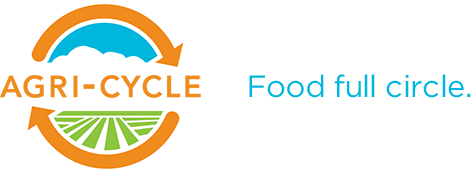In recent years we’ve seen food waste numbers jump – in 2018 alone, over 103 million tons were generated, according to the EPA. This is an environmental and economic tragedy. Food waste is an epidemic, from producers and manufacturers to grocers, restaurants, and cafeterias. However, this food waste can be disposed of sustainably. Let’s look at both a business’s food waste problems and sustainable solutions.
The Problems Food Waste Cause
From solids to slurries, food waste comes in many forms with its own problems, solutions, and needs to get them out of their current disposal method to a more sustainable one.
Solid Food Waste
Often ending up in the trash, solid food waste (including recalled and expired food) ends up in landfills, not only taking up valuable space but also releasing methane and other greenhouse gases, damaging the landfills and the climate. Compounding this is in the landfills, the nutrients from that decomposing can’t be reintroduced into agriculture to close the loop.
Liquid Food Waste
From food manufacturers like dairies and breweries to eateries like restaurants and cafeterias, there’s a large amount of food waste and bi-products that can make it down the drain – leading to sewer issues, wastewater treatment plant damage, overflows, and discharges. This is especially true for food grease and waste vegetable oil (WVO) which are highly regulated (and highly damaging) parts of wastewater.
An important note in food waste is reducing it at the source – we believe in the sustainability hierarchy when it comes to food waste. Start with source reduction at the production/manufacturing origin, then feeding hungry humans using food banks and donations, and then sustainable food waste services like us.
Sustainable Solutions for Food Waste
There are many food waste sustainability options on the market today. One of the most important things to do as a business is homework on how green the disposal solutions are – if they create greenhouse gases or waste themselves, you should pursue greener disposal options. Here are some of the options we use here at Agri-Cycle.
- Renewable Energy via Anaerobic Digestion: There are many ways to create renewable energy via anaerobic digestion (AD). At our home-digester (Exeter Agri-Energy), we use biogas to power three large engines that are connected directly to the grid, powering homes with food waste 24/7. Throughout our footprint, we work with anaerobic digestors that utilize biogas in a variety of other ways such as Compressed or Liquified Natural Gas! Learn more about AD here.
- Fertilizer and Bedding: We create two major by-products through our process. Digestate is a nutrient-rich liquid that we use as an organic fertilizer to grow over 1,000 acres of crops for our dairy cows. As well as animal bedding, comprised of fibrous products (cardboard, paper, popsicle sticks, etc) separated by our depackager. This offsets the use of products like straw. Saving water and reducing land use!
- Composting: Some food waste is a better fit for composting operations. For example, coffee grounds, clean source-separated organics, or bulk by-products of production facilities. Agri-Cycle knows the solution to climate change isn’t one-size-fits-all. That’s why we compost 5000-6000 tons annually.
- Dealing with Packaged Products: Dealing with large amounts of packaged products, such as with recalled or expired products, shouldn’t be a workforce sink for businesses. No more compromising sustainability due to person-power.It’s we’re proud to highlight our de-packaging machine that can get that food waste ready for recycling.
At Agri-Cycle, we’re proud to help businesses throughout New England – from Maine to Maryland – find more sustainable ways of dealing with their food waste. Check out our large list of customers to learn why businesses turn to us to go green. Ready to go green? Contact us today to get started by getting a quote or calling us at 1-800-850-9560.

